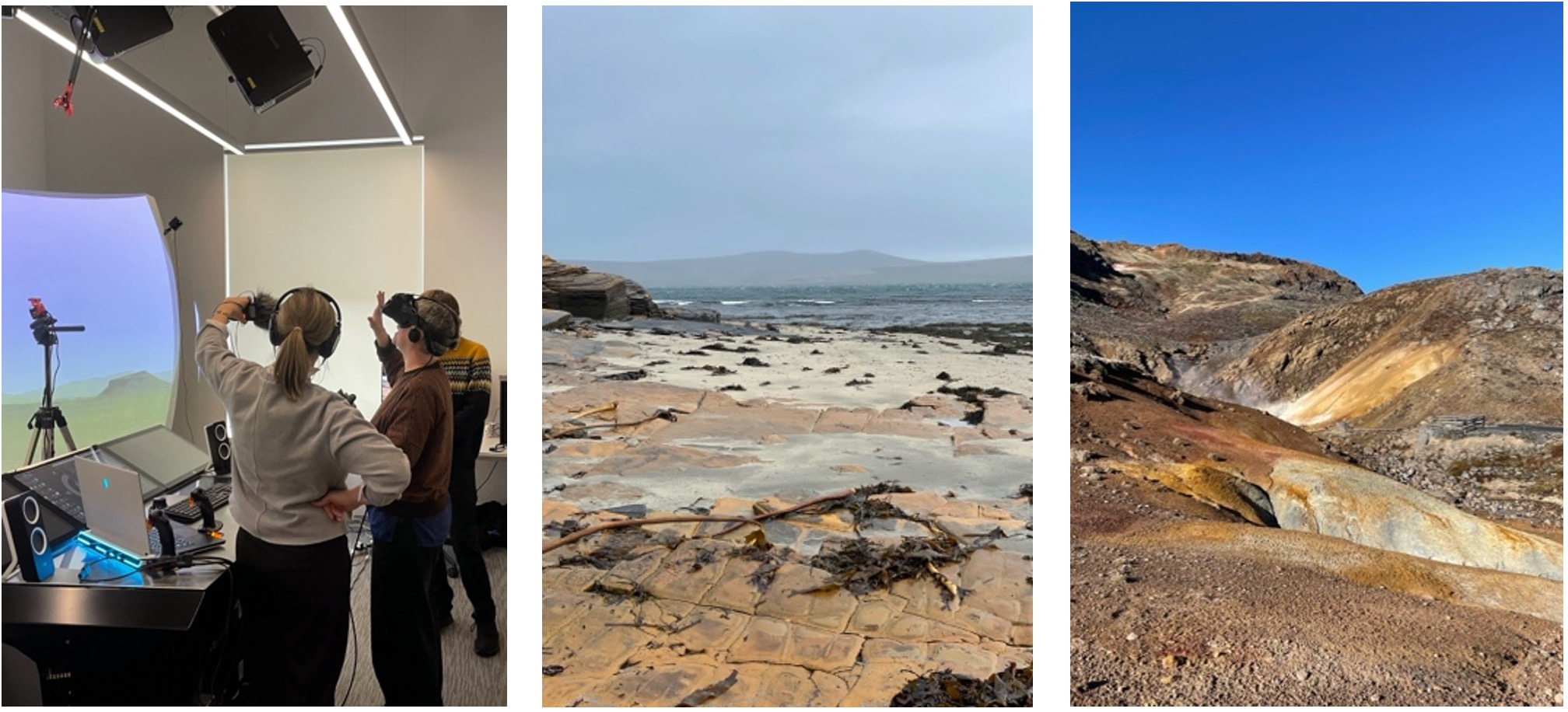Fieldnotes from…. Orkney and Iceland
For a week in each of February and March Dr Claire Cousins visited Mars analogue sites in Orkney and Iceland with Glasgow-based contemporary artist Ilana Halperin and Art Historian Dr Catriona McAra (Univ. Aberdeen) for a Knowledge Exchange project lying at the art-science interface called ‘From Extraterrestrial to Cultural Landscapes’.
For this project the team undertook a ‘fieldwork triptych’, visiting Mars analogue terrains to explore how they inform Mars exploration and understanding, and how they could inform artistic outputs. These ranged from beautifully exposed lakebed sediment stratigraphy along the blustery Orkney coast deposited within the ~400Ma Lake Orcadie that once stretched from the Shetland Islands to Aberdeen, to more recent volcanic craters, lava flows and active hot spring and geothermal environments in an uncharacteristically warm and sunny Iceland. These were preceded by a virtual fieldtrip to Mars using the D’Arcy Thompson 3D Visualisation Suite at the University of St Andrews and a geowalk through local Fife Carboniferous sediments.

During these field excursions, the team discussed how analogue science has shaped our understanding of ancient Martian environments, and how it can be used to guide our search for microbial life that may have inhabited Mars billions of years ago. Ilana Halperin has long worked in Iceland and is well-known for using geology in her practice. They discussed the ‘colour palette’ of Mars, how this is influenced by mineralogy and the relation to Martian epochs, and the deep interaction between life and geology, including how microorganisms themselves can sculpt their own fabrics and features. They also connected with other local artists and photographers, including Dr Antonia Thomas (Lecturer in Archaeology, University of the Highlands and Islands), Þorgerður Ólafsdóttir (visual artist, Iceland), and Max Milligan (Photographer, UK) to discuss their work and interactions with the geocultural landscapes they work with. Finally, visits into the field were paired with gallery fieldtrips at The Pier Art Centre in Orkney and the LÁ Art Museum in Hveragerði.
Exploring long-familiar fieldsites and martian landscapes from an entirely new artistic perspective was incredibly eye-opening, from the often stark similarities between martian and terrestrial geology, to the big-picture questions driving current Mars exploration, and to what it means in a wider cultural context. Earthly landforms have inspired, and been utilised for, countless artworks over the centuries. As we become ever more familiar with our planetary neighbour, there is a huge potential for Mars to be interpreted beyond the factual world of scientific discovery.
These field excursions also proved a valuable lesson in the benefits of taking time to allow observations and discussions to ‘mentally sit’. Fieldwork can often be an intensive and highly active process, with long days, multiple sampling points and measurements, and impromptu field-kit fixes, often in a race with the weather. Many of the most informative and creative discussions took place outwith the immediate field environment.
This project will feature on BBC Radio 4 Open Country, episode ‘Field notes from Mars’ at 15.00 on 4th April 2024 (link).
With additional thanks to the STFC Knowledge Exchange Fund 2023-2024, Kristín Scheving (Museum Director, LÁ Art Museum, Hveragerði, Iceland), Andrew Parkinson (Curator, the Pier Arts Centre, Orkney), and Ruth Sanderson and Rose Ferraby (